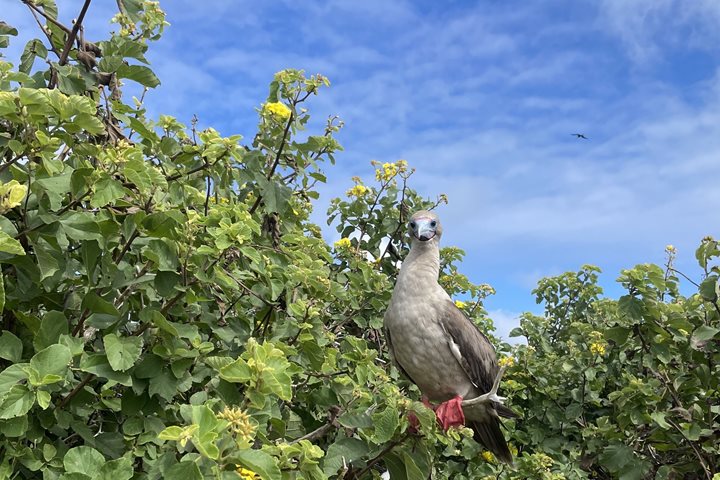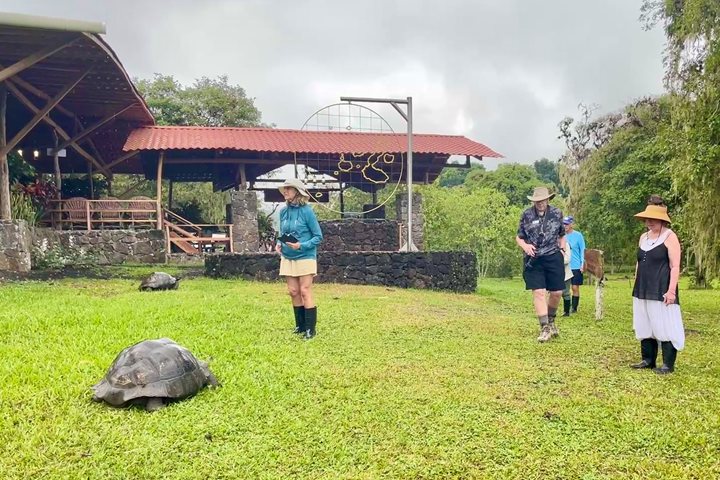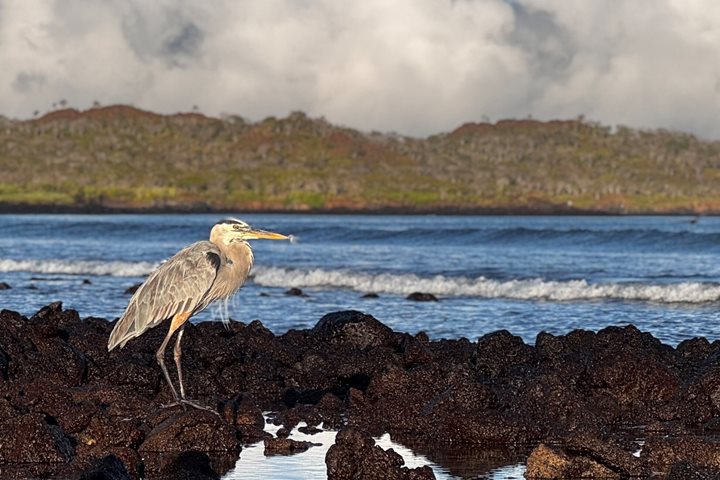Genovesa Island’s location in the North Hemisphere gave us a chance to cross the equatorial line and become so-called shellbacks. Genovesa is also home to one of the largest colonies of red-footed boobies worldwide. It also has a healthy population of great frigate birds, swallow-tailed gulls, Nazca boobies, and yellow-crowned night herons. It’s also home to the short-eared owl, which has adapted to the lack of predators (including the top predator, the Galapagos hawk) by hunting during daily hours. And there they were—very active looking for prey when the sun was still very high in the horizon.
5/29/2025
Read
National Geographic Gemini
Genovesa Island
Genovesa is considered one of the Galapagos crown jewels, and today it was showing off all of its splendor. Immediately after breakfast we put on our sturdy shoes and set out to explore Prince Philip’s Steps. This area is known for opportunities to observe not only large colonies of nesting Nazca and red-footed boobies, but maybe, just maybe, the short-eared owl which exhibits diurnal behavior on this island. After this walk we got ready for a dip in the Pacific Ocean and snorkeling along the inner coast of this caldera. The afternoon was equally amazing as we disembarked to explore Darwin Bay, along a short and easy trail that was packed with wildlife. Here we observed not only nesting frigatebirds, red-footed boobies, and Nazca boobies, but also a few yellow-crowned night herons. It was another incredible afternoon in the Galapagos Islands.







